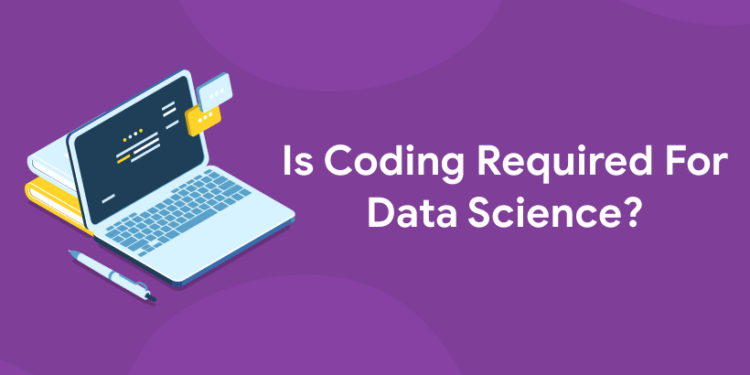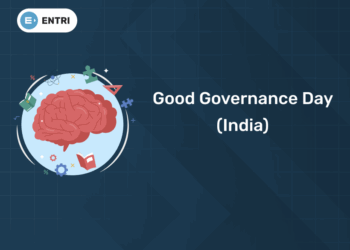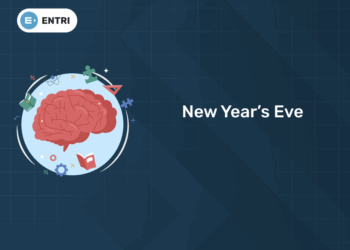Table of Contents
Introduction
Data science has become one of the most sought-after careers in today’s technology-driven world. Organizations across industries rely on data scientists to unlock insights from vast amounts of data, helping businesses make informed decisions, optimize processes, and innovate. Whether you are a student, a professional considering a career switch, or simply curious about data science, one question frequently arises: Is coding necessary to succeed in this field?
The answer is nuanced. While coding is a fundamental skill for most data science roles, the extent to which you need to code depends on the specific job and your career goals. This guide explores the importance of coding in data science, the programming languages to focus on, the coding demands by different roles, and how beginners can effectively learn programming. Additionally, discover how structured courses like Entri’s AI-Driven Data Science program can provide you with the practical coding skills needed to launch a successful data science career.
Why Coding is Important in Data Science
1: Which of the following algorithms is most suitable for classification tasks?
Coding lies at the heart of data science workflows for several reasons:
- Data Collection and Preprocessing: Data in real-world applications is rarely clean or well organized. Coding enables automation of data extraction from diverse sources such as databases, web APIs, and flat files. It also allows efficient cleaning, transformation, and preparation of data to ensure accuracy in analyses.
- Advanced Analysis and Modeling: Statistical tests, machine learning models, and predictive analytics all require scripting. Coding offers the flexibility to customize algorithms, optimize performance, and experiment with different techniques beyond the limitations of point-and-click software.
- Data Visualization and Communication: Conveying complex insights through graphs, charts, and dashboards often involves writing code. Programming languages provide extensive libraries for dynamic and interactive visualizations that make data understandable to stakeholders.
- Workflow Automation: Many data science tasks are repetitive, like retraining models or updating reports with the latest data. Coding enables automation, reducing manual effort and minimizing errors.
- Scalability and Deployment: Implementing machine learning models into production environments and dealing with big data platforms necessitate solid programming skills to build scalable solutions.
Thus, coding isn’t just an accessory in data science—it’s the tool that makes data scientists efficient, innovative, and indispensable.
Are you aspiring for a booming career in IT? If YES, then dive in |
||
Full Stack Developer Course |
Python Programming Course |
Data Science and Machine Learning Course |
🚀 Start Coding Today! Enroll Now with Easy EMI Options. 💳✨
Equip yourself with in-demand skills to land top-tier roles in the data-driven world.
Start Learning Now with EMI OptionsHow Much Coding Do Different Data Science Roles Need?
Data science is a broad field with diverse roles, each demanding different levels of coding proficiency:
| Role | Coding Requirement | Common Tools & Languages |
|---|---|---|
| Data Analyst | Low to Moderate: Focus on querying and visualization | SQL, Excel, Python (basic scripting), BI tools (Power BI, Tableau) |
| Data Scientist | High: In-depth statistical modeling and machine learning | Python, R, SQL, pandas, scikit-learn, TensorFlow |
| Machine Learning Engineer | Very High: Build, optimize, and deploy ML models | Python (including OOP), Java/C++, cloud ML tools |
| Data Engineer | Very High: Develop scalable data pipelines and infrastructure | Python, Java, Scala, Hadoop, Spark |
Key Programming Languages in Data Science
Python
Python is the cornerstone of modern data science. Its simple syntax makes it accessible for beginners yet powerful enough for complex applications. Extensive libraries like pandas (data manipulation), NumPy (numerical computing), scikit-learn (ML algorithms), TensorFlow and PyTorch (deep learning), and visualization packages such as Matplotlib and Seaborn make Python extremely versatile.
R
R excels in statistical analysis and is widely used in academic research and specialized data science projects. It offers a rich ecosystem of packages for data visualization (ggplot2), statistical tests, and reproducible research.
SQL
Structured Query Language (SQL) is essential for accessing and managing relational databases. Since a significant portion of data resides in databases, SQL is a fundamental skill to retrieve, filter, and aggregate data efficiently.
Other Languages
Java and Scala are popular in big data engineering roles involving Hadoop and Apache Spark ecosystems. Julia is gaining attention for high-performance numerical computing, while JavaScript sometimes plays a role in interactive web-based visualizations.
Can You Become a Data Scientist Without Coding?
Certain no-code or low-code tools provide drag-and-drop interfaces for simple data analysis and dashboard creation. While these tools lower the barrier to entry, they come with limitations:
- Lack of flexibility for advanced analyses.
- Difficulties in automation and scaling.
- Minimal capacity for customizing machine learning algorithms.
For those aiming to build a sustainable data science career, especially in competitive markets, learning to code is indispensable. Programming opens doors to creative problem-solving, understanding algorithm nuances, and working across platforms seamlessly.
🚀 Start Coding Today! Enroll Now with Easy EMI Options. 💳✨
Equip yourself with in-demand skills to land top-tier roles in the data-driven world.
Start Learning Now with EMI OptionsHow to Start Learning Coding for Data Science?
Beginners should focus on languages that offer a balance of ease and power, primarily Python, supplemented with SQL knowledge for databases. Here are some practical steps:
- Build a strong foundation in Python basics: data types, loops, conditionals, and functions.
- Explore data manipulation using pandas and numpy libraries.
- Learn data visualization with Matplotlib and Seaborn.
- Gain competency in SQL for querying databases.
- Work on projects using real datasets to apply learned skills.
- Leverage online platforms offering guided, project-based courses.
Entri AI-Driven Data Science Course: Your Path to Coding Mastery
For those seeking structured guidance, the Entri AI-Driven Data Science Course offers a comprehensive program tailored for learners at all levels. Highlights include:
- In-depth training in Python programming, R, SQL, data visualization, and machine learning.
- Hands-on projects based on real-world business problems.
- Live interactive sessions and personalized mentorship.
- Resume building and career placement assistance.
- Flexible learning with a mix of recorded content and live classes.
Thousands of students have already transformed their careers through Entri’s practical approach, gaining skills that employers seek in today’s data-driven world.
Conclusion
Coding is a foundational pillar of data science that empowers professionals to transform raw data into actionable insights. While the coding intensity varies by role, having a solid programming skill set—especially in Python and SQL—is essential for meaningful participation in the data science ecosystem.
Beginners worried about coding complexity should take heart—many resources and courses, including Entri’s AI-Driven Data Science program, make learning coding accessible and enjoyable. Developing your coding abilities will not only enhance your analytical power but also unlock a wide range of career opportunities in this dynamic field.
Invest in coding skills today to embark on a successful and fulfilling data science journey.
🚀 Start Coding Today! Enroll Now with Easy EMI Options. 💳✨
Equip yourself with in-demand skills to land top-tier roles in the data-driven world.
Start Learning Now with EMI OptionsFrequently Asked Questions
Is Python necessary for data science?
Yes, due to its simplicity and extensive libraries, Python is the go-to language for data scientists.
Can I become a data scientist without a formal degree?
Absolutely—practical skills, real projects, and certifications can substitute for formal education in many cases.
Do all data scientists write code daily?
Most data scientists write code regularly, though the amount varies depending on their role and tools.
What resources are best to learn coding for data science?
Structured courses like Entri’s Data Science program combined with hands-on projects offer the most effective learning path.















